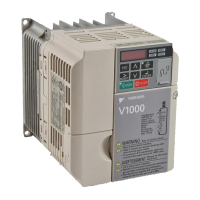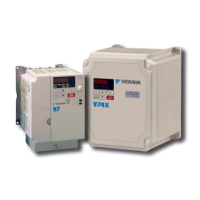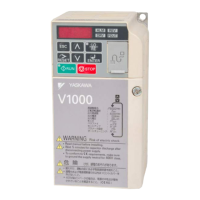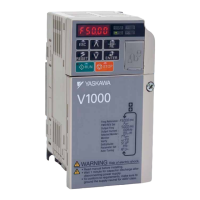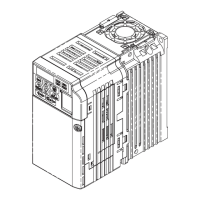7.4 Installing Peripheral Devices
306 YASKAWA TM.V1000.01 V1000 Drive Installation & Start-Up Manual (Preliminary 01-19-07)
◆ Installing a Thermal Overload Relay (Drive Output)
An electronic thermal overload relay protects the motor from overload by opening
three output phases to the motor at an overload condition.
Install a thermal relay between the drive and motor:
• When running multiple motors from the same drive.
• When using a multi-pole motor (eight poles or more).
• When a bypass to operator the motor directly from the power line is used.
A thermal relay is not necessary when running a single motor from a single drive
because the drive has built-in motor overheat protection.
NOTICE: Disable the motor protection function (L1-0 1 = 0) when using an external thermal
relay. The relay should shut off the MC on the input side of the main circuit when triggered.
If thermal motor protection devices are used in connection with high frequency
switching voltage supplies like frequency inverters it can happen, that the
protection device triggers unintentionally. The following things have to be
considered when a protection device is selected:
1. Influences of high frequency currents. The thermal trigger of a thermal motor
protection device or circuit breakers usually consists of a bi-metal and a heating
winding. The current causes the winding to heat up the bi-metal. If the deflection of
the bi-metal becomes to much, the current is cut. Usually these devices are
calibrated with a 50 Hz sine wave current. Hence the trigger level of these devices
is in an acceptable range only, if a current with the same r.m.s. value (same thermal
effect) like the calibration current is flowing. This is the case for currents from 0 to
400 Hz.
High frequency currents like they occur when frequency inverters are used, effect
an additional heat up of the bi-metal, caused by harmonic caused eddy currents and
the skin effect. Both cause a protection device to trigger before the rated trigger
level is reached.
The following table shows correction factors for the motor protection device trigger
level for different adjustment ranges and depending on the carrier frequency of the
drive.

